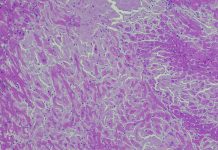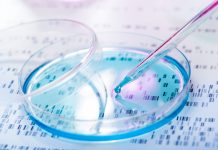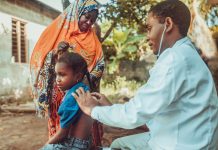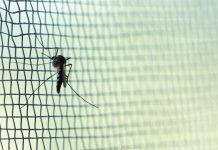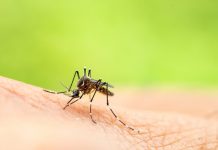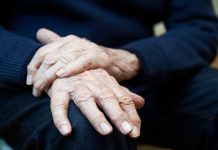An estimated one in ten Americans is affected by a rare disease, but major barriers exist regarding diagnosis, treatment, and care. Here, Annie Kennedy, Chief of Policy and Advocacy at EveryLife Foundation, shares further insight into rare disease care
EveryLife Foundation for Rare Diseases is a non-profit organization in the United States that aims to increase awareness and address the specific obstacles encountered by individuals living with rare diseases. We spoke to Annie Kennedy, EveryLife Foundation’s Chief of Policy and Advocacy, regarding potential solutions to enhance diagnosis and healthcare access for patients. She emphasized the importance of adopting policy revisions that promote a comprehensive and cooperative approach to
rare disease care.
What can be done to limit the diagnostic odyssey most rare disease patients experience?
Several things can be done. For example, many pediatric- onset conditions can be screened for at birth, not all, but many. EveryLife Foundation works with the US federal advisory committee that determines which conditions can be screened for at birth in order to have conditions added to that panel.
In the US, we have a system where conditions recommended for federal screening have to go through a state-by-state process. There are many barriers between when something’s added to the federal panel and when those conditions are added to state panels. Those barriers can add significant timelines, and in many cases, it can take anywhere from five to ten years between when something meets the evidentiary criteria to be screened for federally and when it is screened for at the state level. We are working on a policy to reduce those timelines.
Our National Economic Burden of Rare Disease study, which included a survey of the broad rare disease patient community, revealed that the mean diagnostic odyssey was over six years and included more than 17 providers for medical interventions. That is a best-case scenario; those people had successfully gone through the diagnostic odyssey and had a confirmed diagnosis.
They are diagnosed with an International Classification of Disease code, which accounts for a small fraction of the rare disease community. That diagnostic odyssey can be much longer and more arduous for many patients. It should not take six years to reach a diagnosis following initial symptoms. The journey to get a diagnosis is often costly and includes out-of-state providers, many ICU stays, and ER visits.
Introducing technology into our automated healthcare systems can help tackle these diagnostic challenges. We can look for those signs that might alert providers that a patient might be experiencing a diagnostic odyssey. For instance, if they have seen multiple specialists and attended the emergency room numerous times. We need to better address the underlying causes of their symptoms instead of patients trying to navigate this on their own; data gathering and collaboration between services is critical.
Another challenge is how insurance is structured in the US; someone relying on public insurance (Medicaid) may be unable to use out-of-state providers. Therefore, if you have a diagnosis that requires you to see a specialist who is out of state, you often cannot get reimbursed for that visit. This becomes another barrier to care or a diagnosis for many people in our community. We need to break down these barriers and allow for reciprocity between providers across state lines.
What other challenges do people living with a rare disease face along the care pathway?
Our study examined how living costs impact those with a rare disease. We found that in 2019 alone, the average cost of living with a rare disease across society was nearly a trillion dollars. This was just for 379 rare diseases; there are about 10,000 that we know of. What was important was that about 40% of those costs are direct costs – costs to the healthcare system, physician visits, outpatient visits, prescription costs, etc.; 60% are the costs shouldered directly by families.
We need to ensure that when somebody gets a diagnosis, their ability to thrive with that diagnosis is not dependent on their income or socioeconomic status. Many prescriptions are not covered or reimbursed by healthcare insurance; families have to figure it out on their own. This can be anything from medical equipment costs to paid caregiving. Many medical foods are also required to sustain nutrition but are not reimbursed. For many disorders, there are dental surgeries that
are not reimbursed.
PKU was one of the first conditions we screened for in the US. We knew we had a life-saving intervention through a medical diet for babies if we could identify them immediately. However, insurance does not cover this diet that would enable patients to have better health outcomes. Families must pay for this, and the food can cost between two and $10,000 a year, depending on age and the amount of food needed.
And so those are essential things for us to think about as a healthcare system that we have to ensure that we are helping people sustain the health outcomes we are screening and diagnosing for.
How does the quality of care or the likelihood of access to good quality care vary across different regions of the US?
While we have yet to get data regarding the quality of care provided in different regions, we know there is variability. For example, newborn screening is determined by the resources and funding available in individual states.
Regarding where the specialists are located, it depends on the disorder, diagnosis, and disease space they are in. For neuromuscular conditions, there may be more specialists in the northeast, for example. This significant variability throughout the US speaks to the need to reduce the barriers to access to care providers.
During the pandemic, we had reimbursement for telehealth for the first time, which had a positive impact for many patients. It was not an option for everyone; there were many times when nothing would replace seeing a provider in person, but for many, it was the first time patients could speak to a specialist from home.
Moreover, it prevented patients from experiencing stress from traveling, which can heavily impact their conditions. If patients can be examined without their symptoms exacerbated by stress, that improves what the provider can evaluate and see. When the public health emergency ended, there was some reduction in telehealth provision. Having some of those authorities open back up has been incredibly important to our community, and those are some policy efforts that many in the community are working towards.
Do current support services take enough into account the emotional and psychological aspects of living with a rare disease?
No, absolutely not. The underlying issues related to having a rare disease, progressive rare disease, or a diagnosis that will have a significant devastating outcome on you or a loved one are not being addressed to the degree they need to be.
I do not even think we are beginning to understand the many mental health impacts of living with a rare disease and the emotional and psychological effects on caregivers and family members. I appreciate that there is now more of a move to think about and discuss this, but again, we do not provide coverage for mental health services and support. It is more than just paying for the provider and the appointment; there is no support for traveling to those appointments. We are not providing the resources to enable the care.
Another result of COVID-19 was more flexible working. This was a relief for some people because they did not always have to commute to an office. The pandemic has made it easier for people who need a personal care attendant to have that care provided at home instead of at the office.
What are EveryLife Foundation for Rare Diseases’ current priorities, and how do you work with other organizations to affect changes at a policy level?
We do a lot of evidence-based work. We have a coalition of partners that we work with called our community congress, and together, we look at newborn screening and diagnostic opportunities, regulatory opportunities, and then opportunities to access therapies that the FDA has approved; we work across coalitions to do this work.
Our advocacy arm facilitates access to members of Congress and elected officials involved in our community to ensure that federal officials and elected officials receive the messaging and understand the community’s priorities. Through that, we have our Rare Disease Week event and the Rare Diseases Across America campaign. While members of Congress are in their districts, we have hundreds of members of the rare disease community meeting with them to let them discuss critical legislative priorities.
The priorities of the rare disease community overlap with many communities with whom we work. Other coalitions are leading, for example, on telehealth priorities, and we support those coalitions. The Newborn Screening Saves Lives Act was a bill that was up for reauthorization, and we have been working in coalition with many other organizations, including the March of Dimes, many provider groups, Muscular Dystrophy Association, to get that bill reauthorized. While there are some efforts that we lead ourselves, there are many that we work in partnership with other organizations.
We have been looking at how we can modernize our existing newborn screening system; when this system was built, we did not know that we would be able to screen and treat as many babies for the conditions that we can today. So, we led a series of roundtables last summer called the newborn screening modernization roundtable series, and we brought stakeholders from across the rare disease and newborn screening ecosystem together.
We had about 100 participants who were experts in their spaces and thought of innovative solutions. We have several policy ideas and solutions that came from those meetings. It will be a marathon, not a sprint; we will not get to the implementation of these solutions tomorrow, but we are committed to leading on that and working together with our partners.
Contributor Details
Editor's Recommended Articles
-
Must Read >> Five rare diseases you never knew existed
-
Must Read >> Understanding Amyloidosis, a group of rare diseases




